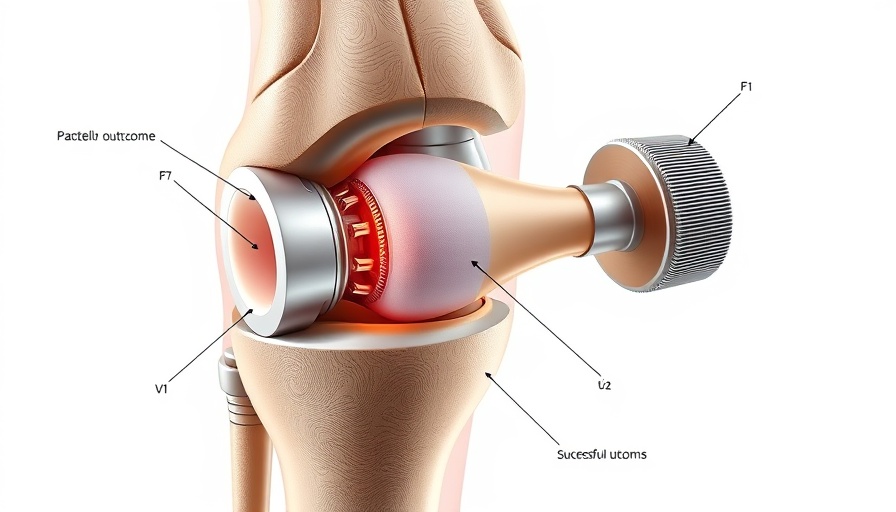
The Rise of Patellofemoral Arthroplasty: A New Focus
In recent years, the surgical landscape for knee-related problems has evolved considerably, with patellofemoral arthroplasty emerging as a compelling solution. This procedure specifically addresses issues in the patella, or kneecap, and its related structures, mainly providing relief for patients suffering from localized arthritis and knee pain. Traditional treatments often led to inadequate outcomes for some patients, which has paved the way for advancements like the Arthrex iBalance implant.
Understanding the Arthrex iBalance Implant
The Arthrex iBalance implant represents the third generation of knee prosthetics aimed at addressing patellofemoral conditions. Specifically designed to integrate seamlessly with the anatomy of the knee, this state-of-the-art implant focuses on restoring functionality and enhancing patient comfort post-surgery. Researchers have reported favorable outcomes among patients undergoing patellofemoral arthroplasty with this new technology.
Study Findings: Unpacking the Results
A recent study highlighted positive results following the use of the Arthrex iBalance implant. Patients reported improved mobility, decreased pain levels, and enhanced overall satisfaction with the procedure. This is significant, as many patients previously found rehabilitation challenging or met with mixed results. Increased patient engagement in activities has been a recurring theme, showcasing the implant's positive impact on quality of life.
Technological Advancements: Shaping the Future of Surgery
The technological evolution embodied by the Arthrex iBalance is indicative of broader shifts within orthopedics, particularly in personalized medicine solutions. The use of 3D printing and advanced materials has created prosthetics that better mimic natural knee movement while ensuring durability and longevity. This trend reflects a growing understanding of the biomechanics of the human body, allowing surgeons to cater to individual needs more effectively.
A Comparison: How Does iBalance Fare Against Previous Implants?
When comparing the iBalance to earlier implants, it's evident that innovation leads to significant improvements in design, flexibility, and functionality. Earlier generations lacked the comprehensive design considerations of the iBalance, often leading to complications or the need for revision surgeries. The latest findings suggest that utilizing modern materials and techniques can not only enhance patient outcomes but also reduce long-term healthcare costs.
Patients' Perspectives: Living with the Arthrex Implant
Feedback from patients reveals a positive trend—many describe a marked improvement in their engagement in daily activities, with some expressing feelings of empowerment. Living with lower pain levels and experiencing a greater range of motion are frequent themes among success stories. This personal touch allows for an emotional connection as patients reflect on their journeys back to mobility.
Looking Forward: The Future of Knee Surgery
The future of patellofemoral arthroplasty appears promising, especially with advancements such as the Arthrex iBalance. Experts suggest that continuous innovation will refine surgical practices, leading to even better outcomes. New materials, surgical techniques, and recovery protocols may further enhance patient experiences, setting a higher standard for knee surgery.
Final Thoughts: Why These Developments Matter
As we consider the impact of the Arthrex iBalance on the field of knee surgery, it's essential to recognize the broader implications for patients and healthcare providers. The advancements not only aim to improve health outcomes but also to enhance the quality of life for individuals again able to engage fully in their lives.
The continual enhancements in knee arthroplasty pave the way for a future where pain relief, mobility, and patient satisfaction are more achievable than ever. Embracing these advancements could revolutionize experiences for countless patients grappling with knee-related issues.
 Add Row
Add Row  Add
Add 




Write A Comment